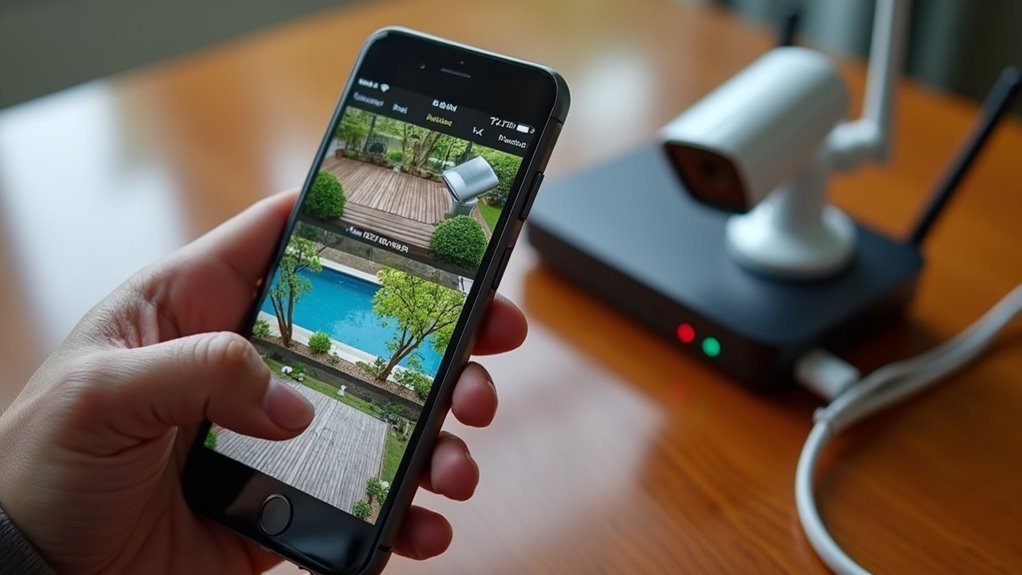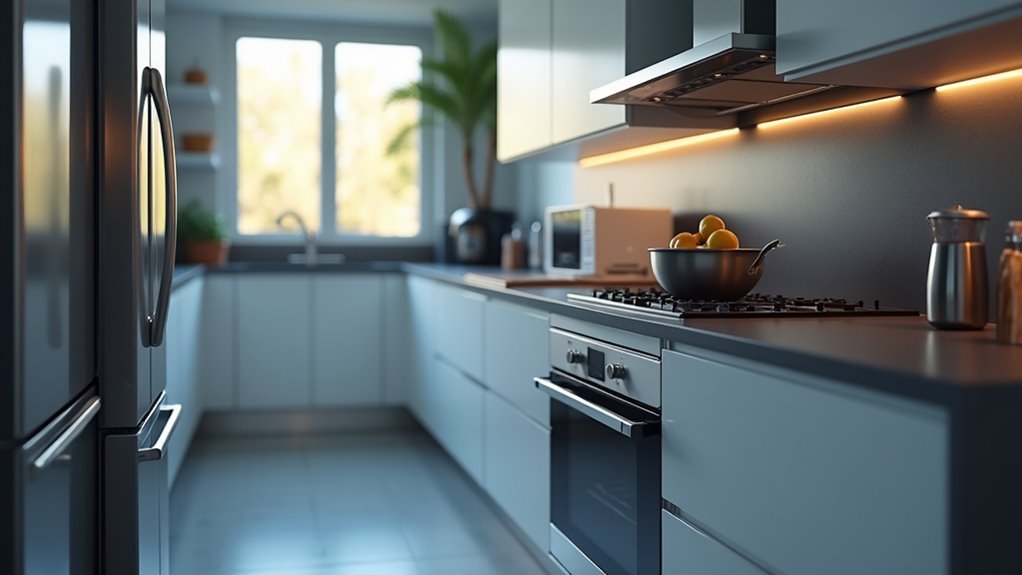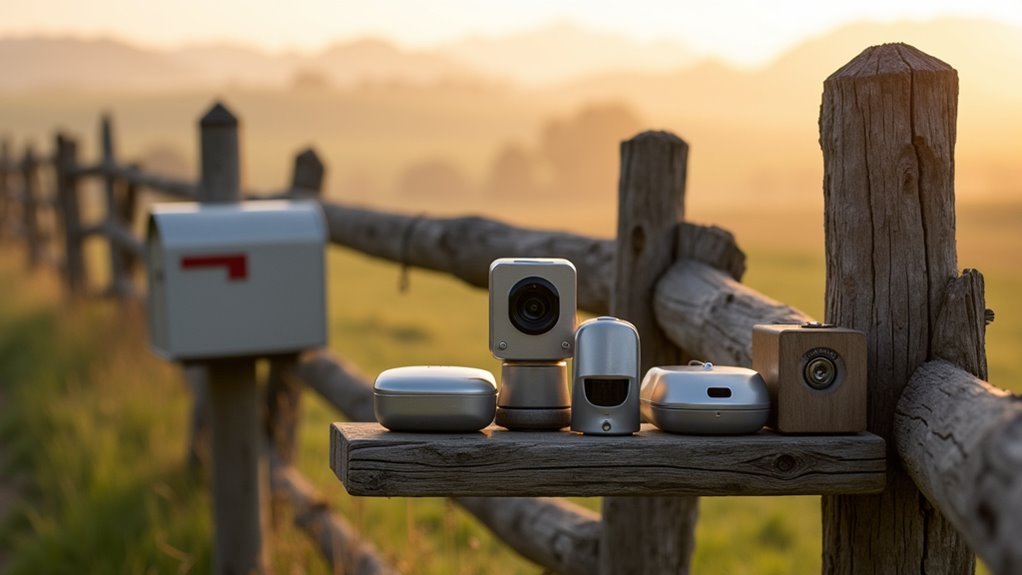You’ve probably struggled with getting quality audio throughout your entire home without breaking the bank on expensive commercial systems. Arduino-based multi-room audio solutions can transform how you distribute music across different zones while maintaining complete control over your setup. Whether you’re looking to retrofit an existing sound system or build something entirely custom, these ten Arduino configurations offer varying levels of complexity and capability that’ll match your technical skills and budget constraints.
Arduino Uno R3 With Ethernet Shield Setup

When building a multi-room audio system, you’ll find the Arduino Uno R3 serves as an excellent foundation due to its robust compatibility with audio components and straightforward programming interface.
Adding an Ethernet shield transforms your Arduino Uno into a network-enabled controller, providing seamless connectivity for managing multiple audio zones throughout your home.
You’ll need basic Arduino programming skills to configure the system effectively. The setup allows you to control each wireless speaker individually through your local network.
By incorporating a microSD card, you can store audio files directly on the device, eliminating dependency on external computers for playback.
This configuration offers complete customization flexibility, letting you activate or deactivate specific zones based on your preferences and create personalized audio experiences across different rooms.
Arduino GIGA R1 WiFi for Advanced Audio Distribution
Three key advantages make the Arduino GIGA R1 WiFi the superior choice for sophisticated multi-room audio systems: enhanced processing power, built-in wireless connectivity, and native support for multiple audio protocols.
You’ll find the GIGA R1’s WiFi capabilities enable seamless communication between zones without additional hardware requirements. The board’s robust specifications handle multiple audio streams simultaneously, ensuring high-quality sound distribution throughout your home.
You can integrate various streaming services and devices thanks to its versatile protocol support. The Arduino GIGA R1’s compatibility with existing libraries simplifies developing customized control mechanisms for managing volume and playback across different rooms.
The Arduino GIGA R1’s extensive protocol compatibility and library support streamlines custom control development for seamless multi-room audio management.
This makes it ideal for ambitious makers pursuing complex multiroom audio projects requiring reliable performance and advanced connectivity features.
Arduino Nano Multi-Zone Controller Build

While the Arduino GIGA R1 WiFi excels in high-end applications, the Arduino Nano offers a more accessible path to multi-zone audio control without sacrificing functionality.
You can build an Arduino to Control Whole house audio systems using this compact microcontroller’s relay integration capabilities. By connecting relays to the Nano, you’ll activate or deactivate individual speaker zones throughout different rooms.
Adding an Ethernet shield enables Wi-Fi communication, letting you Control Whole Home Zoned audio from smartphones or tablets. You can adjust volume and manage playback remotely with ease.
The system’s expandable design allows multiple Nano boards for additional zones as your needs grow.
Using Arduino IDE, you’ll develop custom scripts that enhance functionality and user experience, creating a personalized multi-zone controller.
DFPlayer Mini MP3 Module Integration
The DFPlayer Mini MP3 module transforms your Arduino-based multi-zone system into a complete standalone audio solution.
You’ll appreciate its compact design and cost-effectiveness when building your wireless audio network. The module supports MP3 and WAV formats, storing files on microSD cards for flexible music selection across different zones.
You can control the DFPlayer Mini through serial communication with your Arduino, enabling play, pause, and track-skipping functions through custom coding.
Its built-in amplifier drives small speakers directly, though you’ll want external amplifiers for larger setups to guarantee the best sound quality.
The module’s compatibility with various Arduino boards makes it versatile for DIY enthusiasts.
You’ll find it integrates seamlessly into multi-room configurations, providing reliable audio playback without requiring complex additional hardware components.
Grove Sound Sensor and Audio Component Assembly

Building upon your DFPlayer Mini foundation, Grove Sound Sensor integration adds intelligent audio responsiveness to your multi-room system. The LM386 amplifier and electret microphone combination enables room-specific sound detection, creating reactive audio experiences throughout your space.
| Component | Price | Key Feature | Connection | Rating |
|---|---|---|---|---|
| Grove Sound Sensor | $8.50 | LM386 amplifier | Grove connector | 4.6 |
| DFPlayer Mini | $6.00 | Standalone playback | Serial/pins | 4.8 |
| Jumper Wires | $3.20 | 150mm flexible | Male connectors | 4.5 |
| Arduino Uno | $12.00 | Main controller | Multiple I/O | 4.7 |
| Breadboard | $4.50 | Prototyping | Solderless | 4.4 |
You’ll need those 150mm jumper wires with male connectors for seamless component integration. Remember, effective Grove Sound Sensor assembly requires hands-on experimentation with Arduino functionality to perfect your audio system’s responsiveness.
Speaker Wire Installation and Zone Management
Once your Grove Sound Sensor responds to audio input, you’ll tackle the critical phase of routing speaker wires throughout your home’s infrastructure.
Speaker wire installation demands careful planning to reach each room while maintaining signal integrity. You’ll want high-quality wire with appropriate gauge ratings based on distance—this prevents signal loss and preserves audio fidelity.
Zone management becomes streamlined when you integrate Arduino controllers to activate or deactivate individual speaker zones. This setup lets you customize audio experiences for different rooms effortlessly.
Installing a speaker distribution box simplifies multiple speaker connections, organizing your wiring and enabling easier troubleshooting.
WiFi Communication Protocol Configuration
While wired connections offer reliability, WiFi communication protocols release the true potential of your Arduino multi-room audio system by eliminating physical constraints and enabling wireless control from anywhere in your home.
You’ll need an Ethernet shield to connect your Arduino to your home WiFi network, establishing seamless communication with smartphones and multiple speakers throughout different zones.
Configure your WiFi communication by implementing individual room control mechanisms that allow smartphone app management of playback and volume settings.
Configure WiFi communication with individual room controls for smartphone app management of playback and volume settings.
Store audio files directly on a MicroSD card for easy access across all connected devices.
Focus on maintaining robust WiFi connectivity, especially in larger homes where signal interference might disrupt communication between your Arduino controller and multiple speakers positioned in various rooms.
MicroSD Card Storage and File Management
As your multi-room audio system expands beyond WiFi connectivity, MicroSD card storage becomes the backbone for housing your entire music library locally within each Arduino unit.
You’ll need cards ranging from 2GB to 32GB capacity, which accommodates thousands of tracks while maintaining peak sound quality. Format your MicroSD card using FAT16 or FAT32 for seamless Arduino compatibility.
Organize audio files in clear directory structures that your Arduino can navigate efficiently. The DFPlayer mini MP3 player module works excellently with MicroSD card storage, delivering reliable playback across multiple rooms.
You’ll leverage Arduino’s SD library for smooth file operations, enabling read/write functionality that keeps your system responsive. Proper file management guarantees consistent performance and eliminates audio interruptions during multi-room synchronization.
Amplifier Integration With Arduino Control
With your audio files properly organized on MicroSD storage, you’ll need robust amplifier integration to distribute that sound effectively across multiple rooms.
Your Arduino serves as the central control unit, managing multiple amplifiers through IP interfaces and relay-controlled speaker switching for independent zone management.
You’ll face impedance challenges when connecting multiple speakers – five 8-ohm speakers in parallel create a 1.6-ohm load that exceeds most domestic amplifiers’ capabilities.
Choose higher-rated amplifiers designed for low impedance loads to prevent thermal shutdown.
Implement relay-controlled switching to activate specific speaker pairs based on user preferences.
Adding an Ethernet shield enables seamless networked communication, allowing remote amplifier integration and control from mobile devices or computers for extensive multi-room audio management.
Mobile App Control and Network Connectivity
You’ll need to establish a reliable WiFi network connection using an Ethernet shield on your Arduino to enable seamless communication between your mobile device and the multi-room audio system.
Creating an intuitive app interface becomes essential since it’s your primary control hub for managing volume levels and playback across individual rooms or throughout your entire house.
The app design should prioritize simplicity while providing thorough control over audio files stored on your microSD card and connected network devices.
WiFi Network Setup
Three key components form the foundation of your Arduino multi-room audio system’s WiFi network setup: a stable internet connection, proper hardware configuration, and mobile app integration.
You’ll need an Ethernet shield for your Arduino Uno R3 to establish reliable wireless connectivity throughout your home network.
Strong WiFi signal coverage becomes critical for seamless operation. Wireless dead zones can disrupt audio streaming and control functions, so maintain consistent signal strength in every room.
Your multiroom wireless system requires this stability for peak performance.
Configure your network to support multiple connected devices simultaneously.
Install a microSD card for local audio file storage, enabling direct playback through mobile apps like MPoD.
This setup allows you to control individual room volumes and manage your music library remotely, creating a personalized listening experience.
App Interface Design
When designing your mobile app interface for Arduino multi-room audio control, prioritize intuitive navigation that lets users effortlessly manage multiple audio zones from a single dashboard.
Your app interface design should provide real-time feedback, showing current status and playback information for each connected device, whether it’s a traditional speaker or Bluetooth speaker.
Consider implementing MQTT or HTTP protocols to guarantee efficient communication between your mobile device and Arduino system through the Ethernet shield connection.
Essential features for your multi-room audio app include:
- Zone-based controls – Individual volume sliders and playback buttons for each room
- Streaming service integration – Direct access to popular music platforms within the interface
- Real-time synchronization – Instant status updates reflecting current audio system state across all connected zones
Frequently Asked Questions
What Do I Need for Multi Room Audio?
You’ll need an Arduino Uno, Ethernet shield, amplifiers, speakers, speaker wire, microSD card, and relays. These components enable WiFi control, audio storage, zone management, and room-by-room volume control for your system.
How to Control Speakers in Different Rooms?
You’ll use Arduino with relays to switch audio signals between rooms. Install an Ethernet shield for Wi-Fi control through your mobile app, letting you activate specific speakers remotely based on your preferences.
How to Connect Speaker to Arduino?
You can’t directly connect speakers to Arduino due to low power output. Use an amplifier circuit or DFPlayer mini module with microSD card storage, ensuring proper impedance matching and separate power supplies for ideal performance.
What Is Wireless Multi Room Audio?
You’ll stream music simultaneously to multiple speakers throughout your home using WiFi connections. You can control each room individually or group them together for synchronized playback through smartphone apps and streaming services.





Leave a Reply